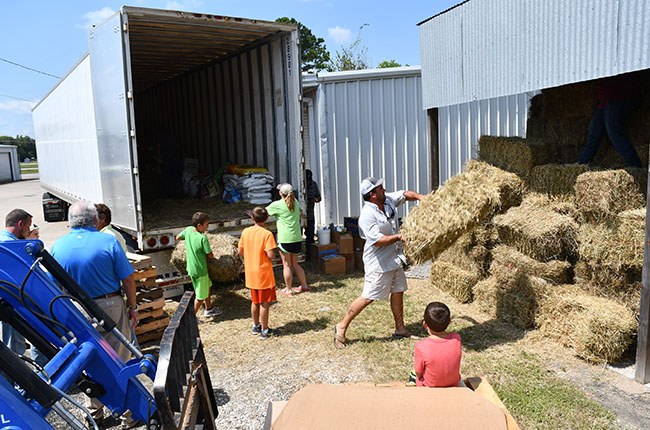Texas Agriculture Losses From Hurricane Harvey Estimated To Be More Than $200 Million
(Texas A&M AgriLife Extension Service/Blair Fannin)
Hurricane Harvey, which decimated parts of South Central Texas and the upper Gulf Coast, caused more than $200 million in crop and livestock losses, according to Texas A&M AgriLife Extension Service economists.
“The effects of Hurricane Harvey will linger for quite some time with our Texas farmers and ranchers,” said Dr. Doug Steele, agency director in College Station. “Many South Texas or coastal area cotton farmers were on the verge of harvesting one of the best crops ever in Texas, while some ranchers were unable to save some cattle from insurmountable flood waters.
“However, the livestock losses could have been far worse had it not been for the many cooperating associations that joined forces with AgriLife Extension to establish animal supply points in the impacted areas, providing livestock with fresh hay and feed donated from across Texas and from generous individuals in neighboring states.”
Hay and feed donations were valued at more than $1.3 million, according to AgriLife Extension economists.
Hurricane losses by agricultural commodity include:
- Livestock: $93 million
- Cotton: $100 million
- Rice and soybeans: $8 million
Livestock losses include not only cattle and calves that died during the hurricane but also industry infrastructure, said Dr. David Anderson, AgriLife Extension livestock economist in College Station. Beyond animals lost directly due to the storm, extensive supplies of hay for winter feeding were destroyed.
“What you must take into consideration is the replacement costs of hay that was destroyed from the high flood waters,” Anderson said. “We are right on the verge of entering winter feeding season and ranchers will have to find replacement hay that averages $63 per round bale. A rancher may typically feed two or more round bales per cow during winter, so even if there isn’t hay available they will still have to purchase some type of supplemental feed. All of this comes with a hefty price.”
###
This story by Blair Fannin originally appeared in AgriLife Today.





